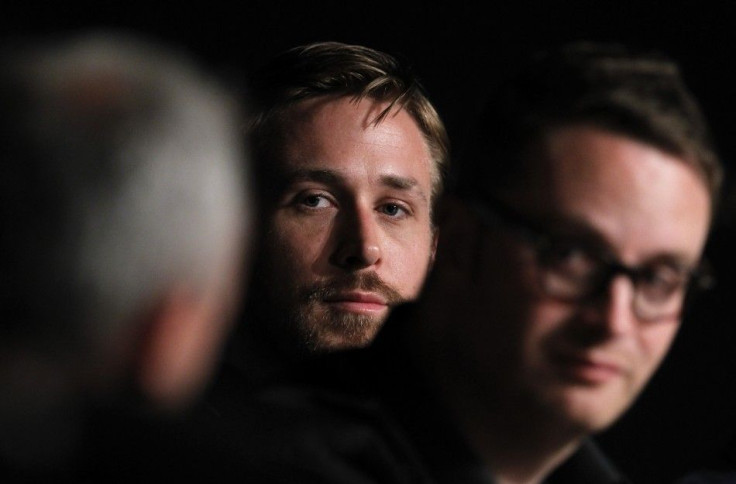'Drive' Movie Review: A Superhero in a Post-Superhero World

The 100,000 streets in the city of Los Angeles are the stage for Drive, an action/gangster/neo-noir hybrid that will undoubtedly boost sales of leather driving gloves this fall.
Ryan Gosling channels his best Steve McQueen as a shadowy, mythical yet marginal creature so entrenched in archetype he is not given a proper name. Though it's his supernatural driving ability that brings him more than his fair share of admiration -- and trouble -- you get the sense he's got a few more aces up the sleeve of his omnipresent satin jacket (embellished with a scorpion).
We meet Driver -- as he is listed in the credits -- in a slick, stirring cold open where he gives chilling instructions over the phone and then doesn't speak again for what feels like 20 minutes. What follows is a muted but breathtaking getaway sequence -- though the stakes get higher later in the movie, this is the scene that will leave your heart pounding the longest.
Danish director Nicolas Winding Refn gets maximum mileage from a spare, well-crafted script (adapted by Hossein Amini from James Sallis' novel); credit is equally due Refn and the riches of casting bestowed upon him. Gosling, Bryan Cranston, Carey Mulligan, Ron Perlman (!), Christina Hendricks, and an astonishing Albert Brooks all bring their A-games (most don't have another).
Brooks, who may have earned himself an encore career, has shown his dark side before (Real Life, Lost in America, Modern Romance) but the villain inside him has never been as gloriously apparent until Drive. (Brooks had to fight -- literally -- for the role: In a Backstage interview, he confessed to pinning Refn against the wall to show him I had strong arms.)
Just as our hero never uses any more words than he needs to, the filmmakers only tell us what we need to know. Driver's boss and only friend, Shannon (Cranston), hasn't had a lot of luck in life, but as he says in a line that suggests much more, he's paid his debts. Driver's love interest Irene (Mulligan) refuses to be hardened by a youthful misstep; her jailbird husband (Oscar Isaac) is desperate enough to hold on to his family that he will deny himself a chance at redemption.
Drive's most obvious weakness is the unencumbered violence that increases in intensity and gratuity towards the end of the film. While a few of the acts (or near-acts) have a Tarantino-esque delight in their sadism, the extravagant bloodbathing clashes with -- and undermines -- the seething restraint of the movie's first half.
Since our mythical hero is a man with no past, when people eventually die by his hand (or in one case, his foot) we're not sure if he is capable of violence only when his back is against the wall. Have we met him during a time of extraordinary circumstance, or is this kind of thing par for the course? It seems the filmmakers themselves aren't sure. Driver and his only friend appear to have a long enough history, and he is somewhat established in both his professions, but there are also clues to a bare-boned, nomadic existence led by people with a long trail of trouble behind them.
The filmmakers (and packagers) relentlessly insist on Driver's realness -- is this an attempt at irony? The one-sheet logline is Some Heroes Are Real, and the song A Real Hero (Real Human Being) -- from the previously unknown band College -- is highlighted on the soundtrack: We hear it twice, both times in critical scenes, with very little dialogue overlay. Why? Gosling's Driver may be a hero -- of the super variant -- but a real human being he is not.
The wrong turns in Drive, which are few and far between, are casualties of self-indulgence: The only understated death scene is confused and strangely anticlimactic, and seems to have been choreographed for the purpose of evoking the fable of the scorpion and the frog -- therefore explaining the scorpion on the jacket. At the point in the movie the commentary isn't neccessary. Worse, the writers seem to have misapprehended the fable altogether.
The film is gorgeous to consume, and not just visually -- the pace is pitch-perfect and the sound editing demands the highest praises. This will help make Drive an easy target for accusations of style over substance. But those accusations will not be entirely fair.
Drive never intends to pass off derivative as original, which is admirable, and so is the film's ability to borrow from John Hughes as effectively as Scorsese, Polanski, and Melville, to name a few. But the homage-paying -- like the gratuitous gore -- could have used another edit.
© Copyright IBTimes 2024. All rights reserved.






















